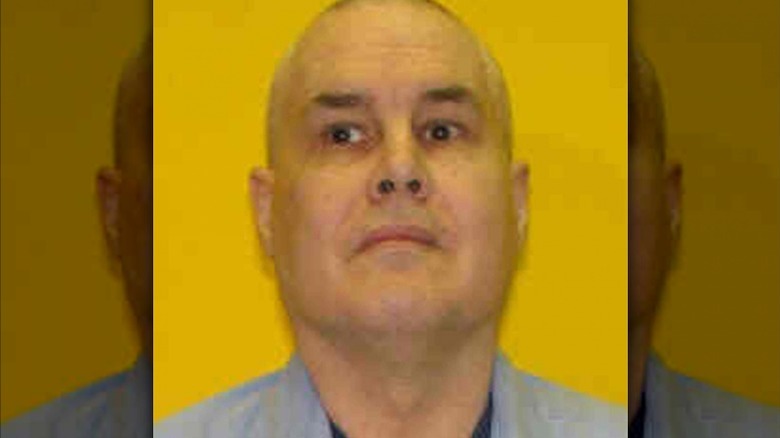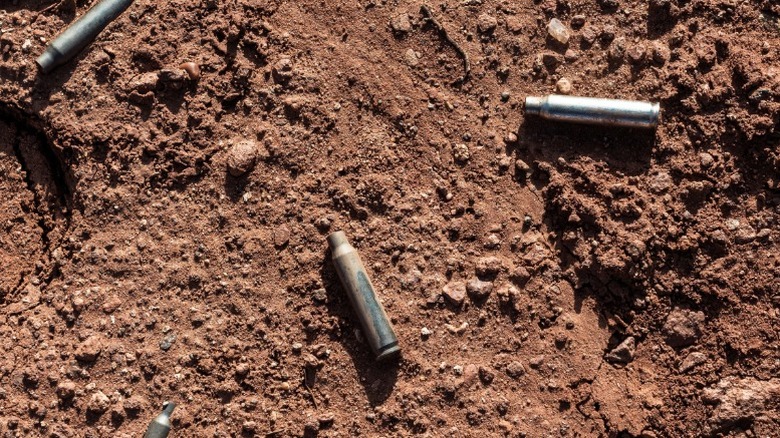Roadside Sniper Thomas Dillon's Lack Of Motive Made His Murders Even More Terrifying
As people go about their normal daily routines, they typically have an awareness of the potential dangers they can be faced with. It's why we look both ways before crossing a street, check our mirrors when we change lanes on a highway, and avoid unlit streets at night. As intelligent creatures (well, mostly), people can assess risks and determine how certain ones can be avoided or minimized. Unfortunately, some monsters are laying in wait, which makes all due diligence and foresight seem almost worthless. A determined killer with a gun can turn the tables on even the most careful person, especially one that is skilled with a sniper rifle.
Killers who take victims out with sniper rifles are rare, but not unheard of. In one of the most publicized cases, a former Marine Corps sharpshooter named Charles Whitman climbed a 300-foot tower and killed 16 people before being shot and killed by police (via Biography). More recently, the tragic Mandalay Bay mass shooting in Las Vegas was perpetrated by a determined shooter took nearly 60 innocent lives with a high-powered rifle fired from a hotel room window (per ABC News).
A horrific case from rural Ohio involved one such killer. Thomas Dillon stalked and killed at least five people from 1989 until his arrest in 1992 (via All That's Interesting). Dillon didn't have any political motive for the shootings, and he wasn't experiencing any known psychiatric condition that would push him toward murder. The reasons he gave investigators for ending five human lives are still chilling, even more than three decades later.
The shootings begin
Thomas Dillon's targets were all men that were engaging in outdoor activities. His first target was Donald Welling, 35, on April 1, 1989 (per Oxygen). Welling was jogging along a back highway in rural Ohio when he was struck with a single rifle slug to his heart (via The FBI Files). Investigators were unable to discover any motive for the killing or locate the weapon used.
It would be more than a year and a half before Dillon struck again. Jamie Paxton, 21, was bow hunting off of State Route 9 in Ohio when Dillon took aim and fired, hitting him three times with shots fired from his high-powered rifle (via The FBI Files). The small rural county was unable to find any clues — not even shell casings. It was another shooting with no clues and no discernable motive. Weeks later, another hunter, Kevin Loring, 30, was gunned down in another rural Ohio county. The single shot to the head was first believed to be a hunting accident (per The FBI Files).
Almost a year after Paxton's murder, an anonymous letter was sent to The Times Leader claiming responsibility for the shooting. "I knew when I left my house that day that someone would die by my hand. I just didn't know who or where," it read. He also promised to kill again. Dillon was successful in throwing the police off track by committing the killings in multiple small counties, miles apart from each other. But when he killed a man on U.S. government property, he made a critical mistake. Now the FBI would get involved.
He just liked to kill
Thomas Dillon's next target was Claude Hawkins in March 1992 (per Oxygen). Hawkins was fishing at a spot near a dam when he was gunned down. When it was determined that the murder was on federal property, FBI got involved (via The FBI Files). Their investigation began like the others: with no motives and scant clues at the scene of the crime. But their task force investigated unsolved shootings from the region and determined that a single individual was responsible for the murders of Hawkins, Jamie Paxton, and Donald Welling. The FBI determined that Kevin Loring's death was linked to the other three and was not an accident. Before they could get their man, Dillon was able to kill again — Gary Bradley was murdered while fishing in Noble County, Ohio.
A psychological profile was completed for the elusive killer. When this was released to the public, a friend of Dillon's came forward and told investigators that he believed that Dillon's suspicious behavior might fit the profile (per The Times Leader). Notably, Dillon was caught using a silencer at a wilderness park and put on probation. He violated it when he tried to buy a gun at a show months later. Police discovered that a Swedish Mauser rifle that Dillon recently sold matched the slugs fired in the deaths of Hawkins and Bradley.
Dillon confessed to all five murders to avoid the death penalty. He died in prison in 2011 (via TimesReporter.com). Of the killings, he remarked that they were like "shooting bottles at the dump."


